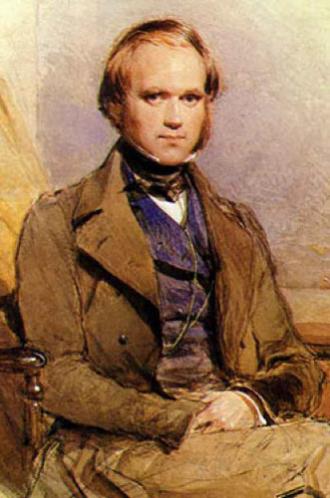 SKC Films Library |
| SKC Films Library >> Science >> Geology >> General |
| Charles Lyell proponent of uniformitarianism
Charles Lyell was born on his family's estate at Kinnordy, Scotland, on November 14, 1797. His father, also named Charles, was a botanist-turned-lawyer for whom the plant Lyellia was named. The family moved to Bartley Lodge in the New Forest, near Southampton, England, soon after his birth. In 1816 he entered Exeter College, Oxford, where the lectures of William Buckland first drew his attention to geological study. After taking his Bachelor of Arts in 1819 and Master of Arts in 1821, he entered Lincoln's Inn, and was called to the bar in 1825. Lyell's eyes were weakened by hard law study and he often sought and found relief by spending much time on geological work outdoors. In 1819 he was elected a fellow of the Linnean and Geological Societies.He read his first paper, "On a Recent Formation of Freshwater Limestone in Forfarshire," to the latter society in 1822, and acted as one of the honorary secretaries in 1823. In that same year he went to France, with introductions to Georges Cuvier, Alexander von Humboldt, and other men of science, and examined the Paris Basin with the French geologist Louis-Constant Prévost. In 1824 he tudied sediments forming in freshwater lakes near Kinnordy with Buckland. In 1827 he decided to give up the law and focus all of his time and energy on geology. A journey to France and Italy with Roderick Murchison in 1828 gave rise to joint papers on the volcanic district of Auvergne and the Tertiary formations of Aix-en-Provence. After parting with Murchison, Lyell studied the marine remains of the Italian Tertiary Strata and then conceived the idea of dividing this geological system into three or four groups, characterized by the proportion of recent to extinct species of shells. He subsequently coined the names now universally known -- Eocene (dawn of recent), Miocene (less of recent), and Pliocene (more of recent) -- and drew up a table of shells in illustration of this classification. In Principles of Geology, Lyell showed that geological processes acting in the past -- such as sedimentation in rivers, erosion by wind, or deposition of ash and lava by volcanic eruptions -- were much the same as those we see today. The first volume of the Principles of Geology appeared in 1830, and the second in January 1832. Received at first with some opposition, so far as its leading theory was concerned, the work ultimately enjoyed great success, and the two volumes had already reached a second edition in 1833 when the third, dealing with the successive formations of the earth's crust, was added. The theory, known as uniformitarianism, has become the fundamental basis of modern geology. From 1831 to 1833 Lyell was a professor of geology at King's College. In 1832 he married Mary Horner, who from that point forward associated with him in all his work. In 1834 he made an excursion to Denmark and Sweden, the result of which was his Bakerian lecture to the Royal Society "On the Proofs of the gradual Rising of Land in certain Parts of Sweden." He also brought before the Geological Society a paper "On the Cretaceous and Tertiary Strata of Seeland and Möen." In 1835 he became president of the Geological Society. In 1837 he was again in Norway and Denmark. In 1838 Lyell published the Elements of Geology, which, from being originally an expansion of one section of the Principles, became a standard work on stratigraphical and palaeontological geology. In 1841 Lyell accepted an invitation to lecture and travel for a year in North America, returning again for nine months in 1845–46 and for two short visits in the 1850's. During these journeys he estimated the rate of recession of the falls of Niagara and the annual average accumulation of alluvial matter in the delta of the Mississippi. His study of vegetable accumulations in the "Great Dismal Swamp" of Virginia was afterwards used in illustrating the formation of beds of coal. He also studied the coal formations in Nova Scotia, and discovered the earliest known landshell, Pupa vetusta, in the hollow stem of a Sigillaria. The travels resulted not only in papers, but also in two works not exclusively geological, Travels in North America (1845) and A Second Visit to the United States (1849). Lyell's third great work, The Antiquity of Man, appeared in 1863, and ran through three editions in one year. In it he gave a general survey of the arguments for man's early appearance on the earth, derived from the discoveries of flint implements in post-Pliocene strata in the Somme valley and elsewhere, and thus became one the earliest men to embrace Darwin’s theory of natural selection in biology. Lyell was knighted in 1848, and was created a baronet in 1864, in which year he was president of the British Association at Bath. He was elected corresponding member of the French Institute and of the Royal Academy of Sciences at Berlin, and was created a knight of the Prussian Order of Merit. He died in London, England, on February 22, 1875, and is buried in Westminster Abbey.
SEE ALSO |
| SKC Films Library
>> Science >> Geology >> General This page was last updated on 02/21/2018. |
